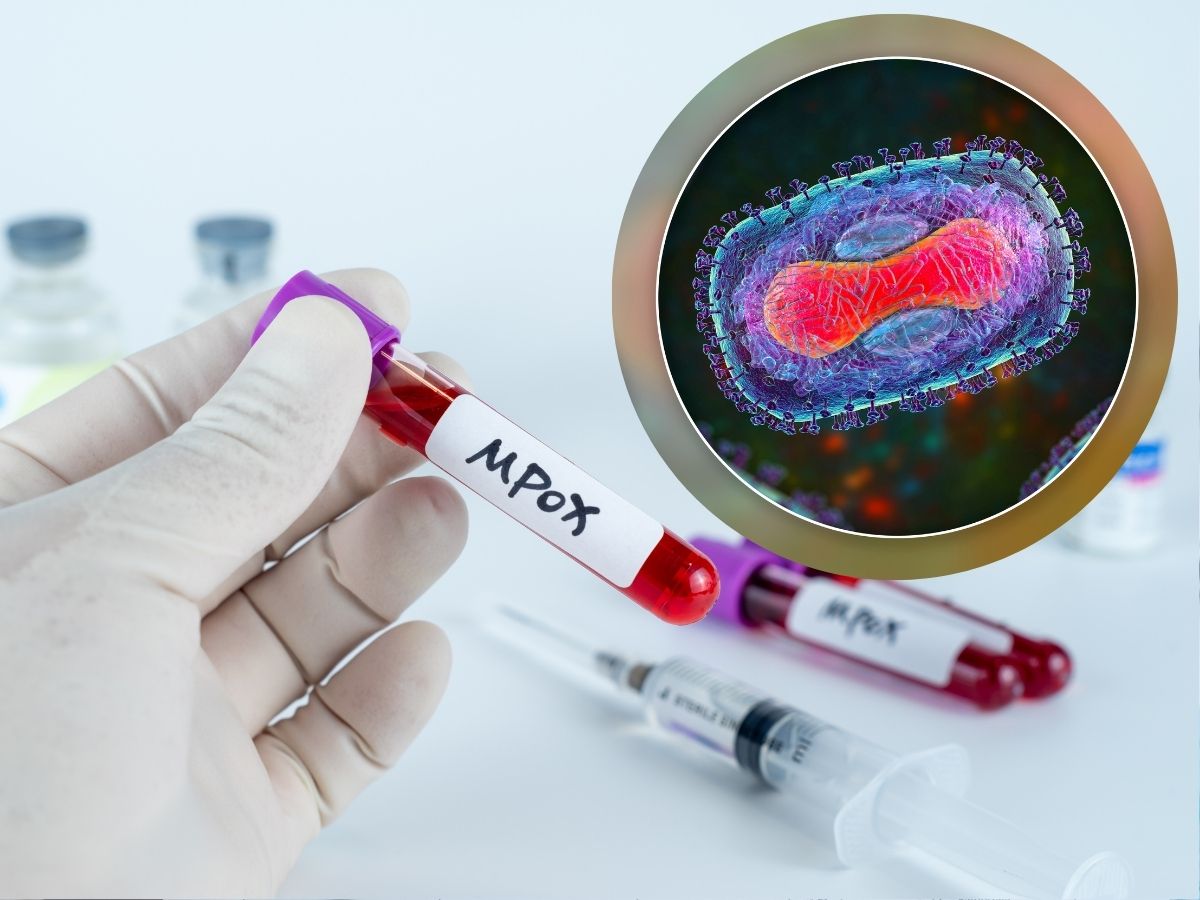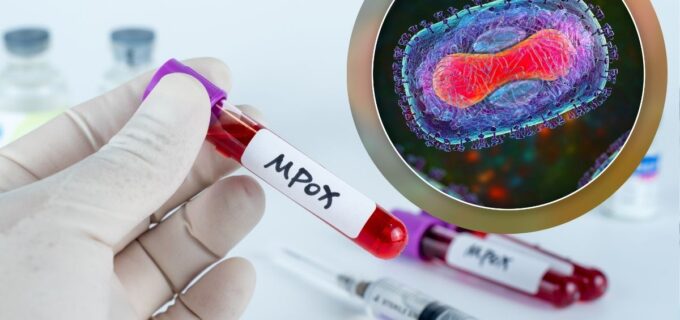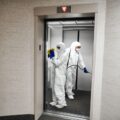
As the world continues to navigate the challenges of emerging infectious diseases, the rise in global cases of MPox (Monkeypox) has become a growing concern for many. Recently, there has been a noticeable increase in MPox cases in regions where the virus was previously rare, particularly in Europe and North America. This surge has raised alarms among public health officials, as the spread is not confined to the traditionally endemic areas of Central and West Africa. Countries like the United States, the United Kingdom, Spain, and Germany have reported significant numbers of new cases, many of which are linked to community transmission rather than travel to endemic regions.
The World Health Organization (WHO) has classified MPox as a public health emergency of international concern, underscoring the importance of global vigilance. Despite the fact that Singapore has not yet experienced a significant outbreak, the interconnectedness of our world means that the risk of MPox reaching our shores remains a possibility. Singapore’s position as a major global travel and business hub makes it especially important to stay informed and prepared. With travelers coming from all corners of the globe, the potential for MPox to enter the country is real, particularly through individuals who may not yet be showing symptoms.
Given these risks, it is crucial for Singaporeans to take proactive steps in safeguarding their homes and workplaces. Being informed about the nature of MPox, understanding how it spreads, and knowing how to mitigate these risks are all key to preventing a potential outbreak. In this blog, we’ll delve into what MPox is, the modes of its transmission, the specific risks it could pose to Singapore, and most importantly, how Big Red can assist you in keeping your environment safe through our professional disinfection services. Whether it’s your home, office, or any shared space, ensuring cleanliness and reducing the risk of transmission is essential to protecting yourself and those around you.
What is MPox? Understanding Monkeypox & Its Symptoms
MPox, also known as Monkeypox, is a viral infection caused by the Monkeypox virus. It’s a zoonotic disease, meaning it can be transmitted from animals to humans. First identified in 1958 among laboratory monkeys, it was later found in humans in the 1970s in Africa. The disease has two strains: the Central African (Congo Basin) strain, which tends to be more severe, and the West African strain, which is generally less severe but still a cause for concern.
The symptoms of MPox are somewhat similar to smallpox but are typically milder. They include:
- Fever
- Headache
- Muscle aches
- Swollen lymph nodes
- Chills
- Exhaustion
- Rashes
Within a few days of the fever, a rash can develop, often starting on the face and then spreading to other parts of the body. The rash progresses through several stages, from flat lesions to raised bumps, then to fluid-filled blisters, which eventually scab over and fall off.
How Does MPox Spread?
MPox spreads primarily through direct contact with the infectious rash, scabs, or body fluids of an infected person. This direct contact is the most common mode of transmission, particularly when a person touches the skin or bodily fluids of someone who has active lesions. The virus is present in the lesions and can easily be transferred through physical touch, making personal interactions with infected individuals a key point of concern.
In addition to direct contact, MPox can also be transmitted through respiratory droplets. This occurs during prolonged face-to-face contact, such as talking, coughing, or sneezing, where droplets from the respiratory tract of an infected person can enter the respiratory tract of another individual. However, unlike highly contagious diseases such as COVID-19, which can spread rapidly through airborne transmission, MPox generally requires longer and closer contact to spread via respiratory droplets. This makes it less likely to spread in casual, brief encounters but more of a risk in environments where people spend extended periods in close proximity, such as households, workplaces, or social gatherings.
Another significant transmission route is through contact with contaminated materials, such as bedding, clothing, or towels that have been used by someone with MPox. The virus can survive on these surfaces for some time, and if another person touches these contaminated items and then touches their face or an open wound, they can become infected. This highlights the importance of thorough cleaning and disinfection in areas where an infected person has been.
While MPox is less contagious than many other viral infections, it still poses a significant risk in settings where close, prolonged contact occurs. This includes places like households, healthcare settings, dormitories, and communal living spaces. In such environments, the virus can spread more easily, particularly if individuals are unaware of the infection and continue to interact closely with others.
In addition to human-to-human transmission, MPox can also be transmitted from animals to humans, a process known as zoonotic transmission. This can occur through bites or scratches from infected animals, or through the handling and consumption of bushmeat, which is meat from wild animals. In parts of Africa, where the virus is endemic, this mode of transmission is more common due to closer interactions between humans and wild animals.
However, in urban environments like Singapore, where there is limited interaction with wildlife and bushmeat is not commonly consumed, human-to-human transmission is the primary concern. The urban setting, characterized by dense populations and frequent social interactions, makes it important to focus on preventing the spread of MPox through direct contact, respiratory droplets, and contaminated surfaces. Public health measures, personal hygiene practices, and professional disinfection services play crucial roles in minimizing the risk of transmission in such settings.
Why Singapore Needs to Be Vigilant: The Potential Risk of MPox
Given the ways MPox can spread through direct contact, respiratory droplets, and contaminated materials, Singapore’s position as a global hub further amplifies the potential risks associated with this infectious disease. As one of the world’s most connected cities, Singapore is a major crossroads for international travel and trade. This high level of connectivity means that people from all over the world pass through the country daily, whether for business, tourism, or transit. While this global interaction is a key strength of Singapore, it also increases the likelihood that infectious diseases from other regions could be introduced here.
Although Singapore has not experienced widespread outbreaks of MPox, the recent global surge in cases has understandably raised concerns. Countries across Europe, North America, and even parts of Asia have reported increasing numbers of MPox infections, often linked to international travel or community transmission. As such, the possibility of MPox reaching Singapore cannot be discounted, particularly with the influx of travelers from regions experiencing outbreaks.
Certain environments within Singapore are at higher risk if the virus were to be introduced. High-risk areas include places where close and frequent human contact is common, such as offices, schools, residential complexes, public transportation, and healthcare facilities. These are environments where people gather in close proximity, often for extended periods, making them more susceptible to the spread of infectious diseases like MPox. For instance, an office where employees work in close quarters or a school where children interact closely could become vulnerable if an infected individual enters these spaces.
Despite these risks, Singapore is fortunate to have a robust and well-prepared healthcare system. The country’s healthcare infrastructure has been tested by previous outbreaks, such as SARS and COVID-19, and is equipped with the resources and expertise needed to manage infectious diseases. However, even with a strong healthcare system, the adage “prevention is better than cure” holds true. Once an infectious disease like MPox gains a foothold, controlling its spread becomes more challenging and resource-intensive. This makes proactive measures, such as awareness, early detection, and disinfection, critical in preventing the virus from taking hold in the first place.
Understanding the specific risks associated with MPox and taking proactive steps to mitigate these risks can make a significant difference in protecting our communities. Public awareness campaigns, encouraging good hygiene practices, and ensuring environments are regularly disinfected can all contribute to preventing the spread of MPox. By staying informed and prepared, Singaporeans can help safeguard their homes, workplaces, and public spaces from the potential threat of MPox, ensuring that any risk is minimized before it can become a larger public health issue.
How to Prevent the Spread of MPox
Prevention of MPox focuses on reducing the risk of transmission. Here are some practical steps to protect yourself and others:
- Practice Good Hygiene: Wash your hands regularly with soap and water, especially after contact with potentially contaminated materials. Use alcohol-based hand sanitizers if soap and water are not available.
- Avoid Close Contact: If you or someone else is showing symptoms of MPox, avoid close contact until the person has fully recovered. This includes avoiding direct contact with rashes, scabs, or body fluids.
- Disinfect Surfaces: Regularly clean and disinfect surfaces, particularly in shared spaces such as offices, communal areas, and public facilities.
- Use Personal Protective Equipment (PPE): In healthcare settings or when caring for someone with MPox, use appropriate PPE such as gloves, masks, and gowns to reduce the risk of transmission.
- Be Cautious with Animals: Avoid contact with animals that could potentially carry the virus, and refrain from consuming bushmeat.
Big Red’s Expert MPox Disinfection Services: Why You Should Choose Us
Despite Singapore’s robust preparedness to tackle emerging diseases, bolstered by the experiences gained during the COVID-19 pandemic, the risk of contamination within enclosed environments remains a concern. Environments like offices, schools, residential complexes, and other shared spaces are particularly vulnerable due to the close and frequent human interactions that occur within them. Even with the heightened awareness and improved health protocols post-COVID, these enclosed spaces can still become hotspots for the transmission of infectious diseases like MPox.
When it comes to ensuring these environments are safe and sanitized, professional disinfection services are essential. This is where Big Red steps in. At Big Red, we understand the critical importance of maintaining a safe and healthy environment, especially in the face of emerging infectious diseases like MPox. Our extensive experience in providing disinfection services during the COVID-19 pandemic has equipped us with the expertise and knowledge necessary to handle the disinfection of spaces that may be affected by MPox as well.
Here’s how we can assist you in safeguarding your environment:
- Comprehensive Disinfection Services: We provide thorough disinfection services for both residential and commercial properties. Our team utilizes hospital-grade disinfectants and cutting-edge equipment to ensure that all surfaces are meticulously sanitized, significantly reducing the risk of MPox transmission.
- Tailored Solutions for High-Risk Areas: We recognize that different spaces have different needs. Whether it’s an office, a school, or a residential complex, we customize our disinfection services to address the specific requirements of high-risk areas. This includes focusing on common touchpoints, shared facilities, and areas with high foot traffic, ensuring that every potential contamination site is properly disinfected.
- Expert Knowledge and Training: Our team is highly trained in the latest disinfection protocols and is well-versed in the unique challenges posed by MPox. We continuously update our practices in line with the latest guidelines from health authorities to ensure that our services are both effective and compliant with the highest standards of safety and hygiene.
- Rapid Response and Flexibility: In situations where a suspected or confirmed case of MPox arises, time is of the essence. Big Red offers rapid response services designed to quickly disinfect affected areas, minimizing the risk of further transmission. Our team is available 24/7 to accommodate urgent needs, ensuring that your environment is sanitized and safe as swiftly as possible.
- Safe and Environmentally Friendly Practices: We prioritize the safety of our clients and the environment. Our disinfection methods are not only highly effective but are also designed to be environmentally friendly, leaving no harmful residues and causing no damage to surfaces.
As the world continues to face the challenges of emerging infectious diseases, it’s crucial to remain vigilant and take proactive measures to protect our communities. MPox may not be as widespread as some other diseases, but it still poses a potential risk, particularly in environments with close human contact.
At Big Red, we are committed to helping you maintain a safe and healthy environment. Whether it’s your home, office, or any other space, our expert disinfection services are designed to mitigate the risk of MPox transmission and keep you, your family, and your colleagues safe.
If you have any concerns or need disinfection services for your premises, don’t hesitate to contact us at 6241 9443 or WhatsApp. Together, we can help prevent the spread of MPox and ensure that Singapore remains a safe place for everyone.




